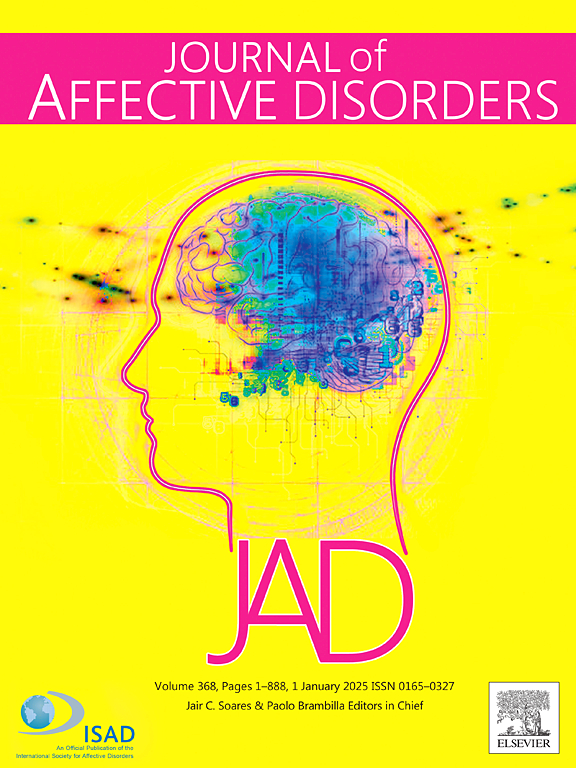Cingulate cortex cortical thickness associated with non-suicidal self-injury and suicide risk in youth with mood disorders
IF 4.9
2区 医学
Q1 CLINICAL NEUROLOGY
引用次数: 0
Abstract
Background
Non-suicidal self-injury (NSSI) is associated with increased suicide risk and is prevalent among patients with mood disorders, including major depressive disorder (MDD) and bipolar disorder (BD). Structural alterations in cortical regions involved in emotional processing are linked to NSSI as well as suicide risk in mood disorders. Few studies have investigated the neurobiological substrates of NSSI and suicidal thoughts and behaviors (STB), particularly comparing youth with BD to those with MDD. There is a critical need to examine NSSI and STB in the context of MDD and BD separately, as risks differ between these populations.
Methods
This study investigated the relationship between anterior cingulate cortex (ACC) cortical thickness and volume and NSSI and STB in youth with mood disorders. One-hundred thirty-seven youth (86 with MDD and 51 with BD), ages 13 to 21, completed a diagnostic interview, clinical assessments, and 3 T magnetic resonance imaging. Morphometric analysis of brain images was performed to evaluate differences in cingulate regions of interest.
Results
Seventy-five youth reported a NSSI. Youth with BD were more likely to report NSSI than youth with MDD. In addition, youth with BD and NSSI were more likely to have a suicide attempt and had significantly lower cortical thickness in the right caudal ACC (p = .009, η2 = 0.050) compared to youth with MDD and NSSI.
Conclusions
These structural alterations in the ACC, which impact emotional regulation and pain processing, may be linked to the increased NSSI and suicide risk observed in BD.
求助全文
约1分钟内获得全文
求助全文
来源期刊

Journal of affective disorders
医学-精神病学
CiteScore
10.90
自引率
6.10%
发文量
1319
审稿时长
9.3 weeks
期刊介绍:
The Journal of Affective Disorders publishes papers concerned with affective disorders in the widest sense: depression, mania, mood spectrum, emotions and personality, anxiety and stress. It is interdisciplinary and aims to bring together different approaches for a diverse readership. Top quality papers will be accepted dealing with any aspect of affective disorders, including neuroimaging, cognitive neurosciences, genetics, molecular biology, experimental and clinical neurosciences, pharmacology, neuroimmunoendocrinology, intervention and treatment trials.
 求助内容:
求助内容: 应助结果提醒方式:
应助结果提醒方式:


